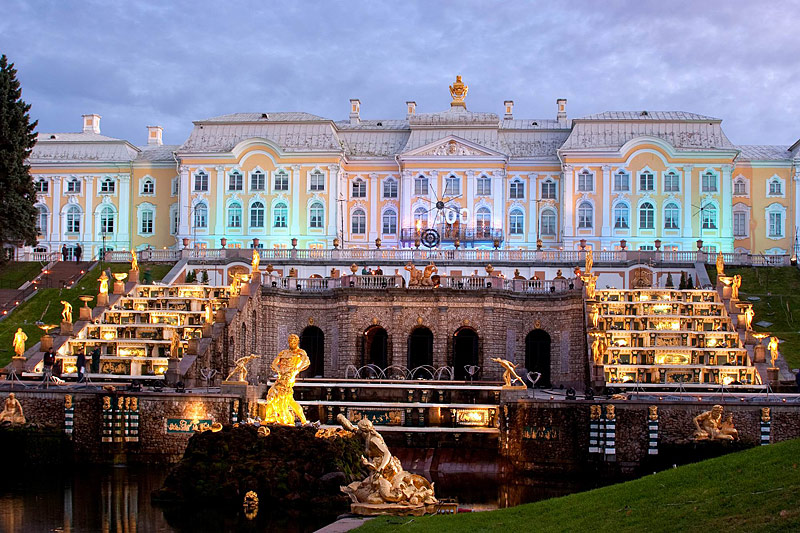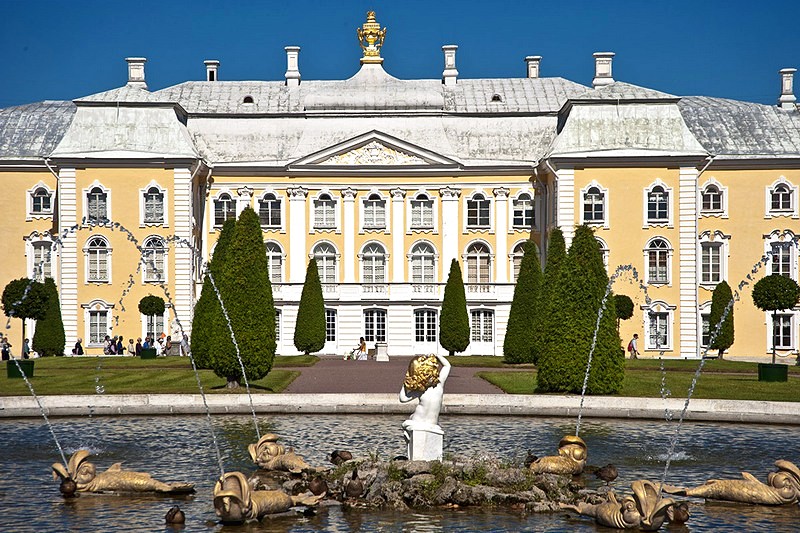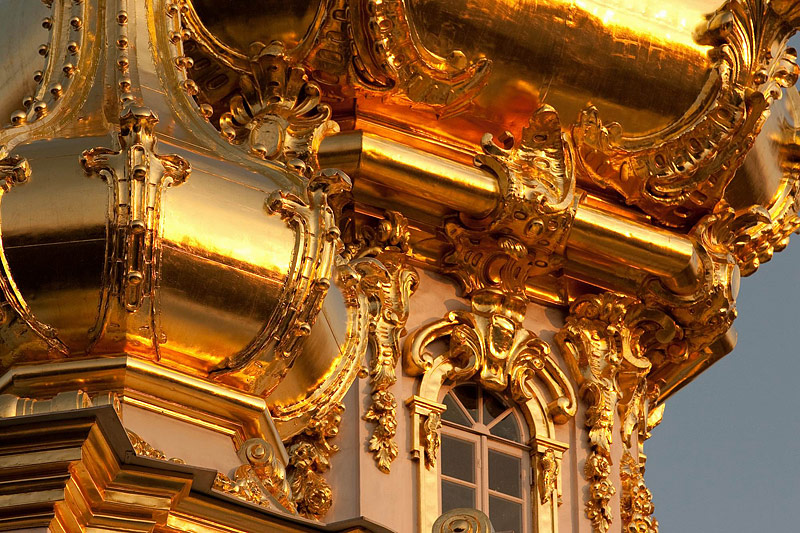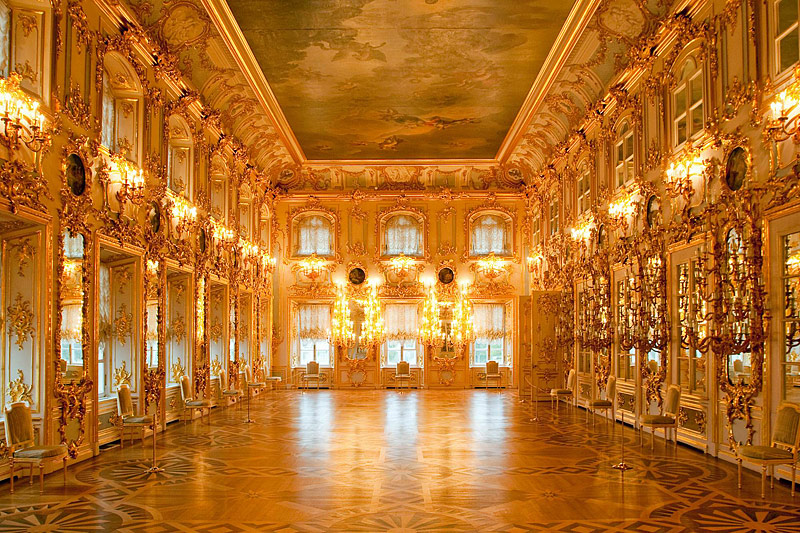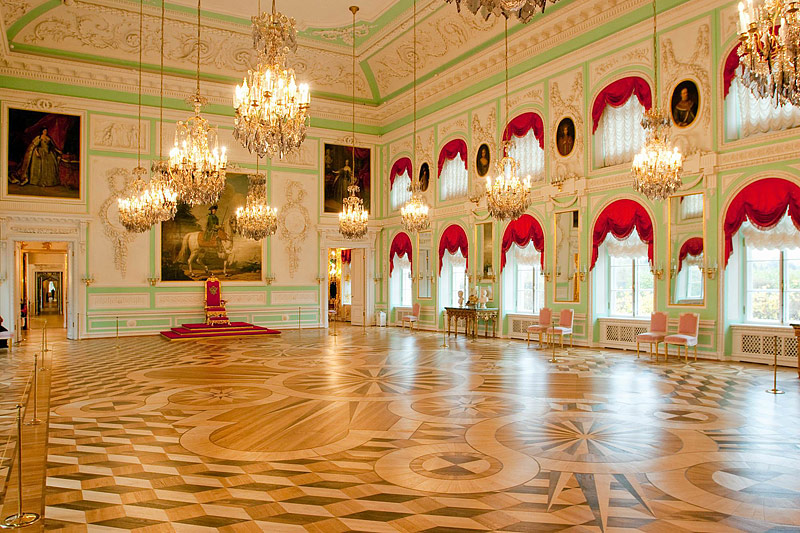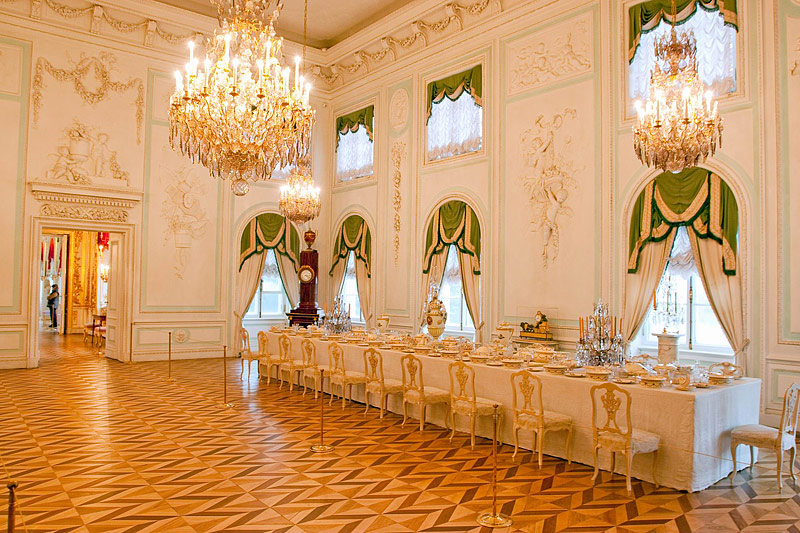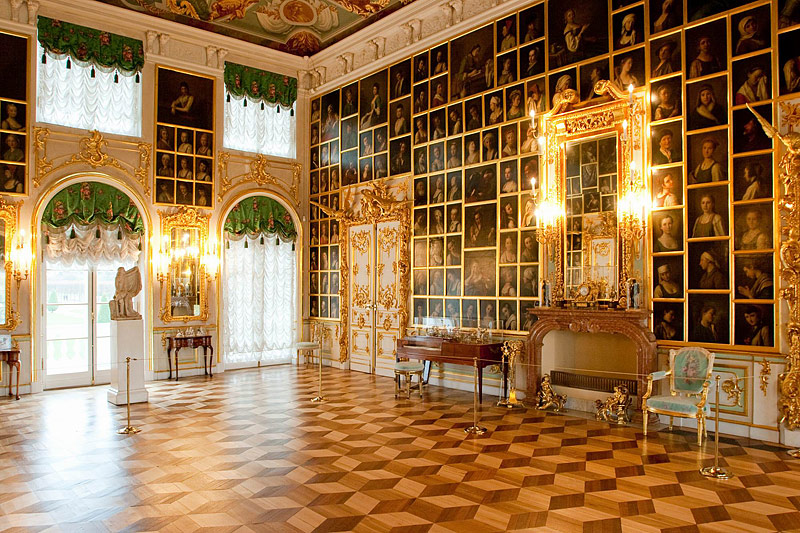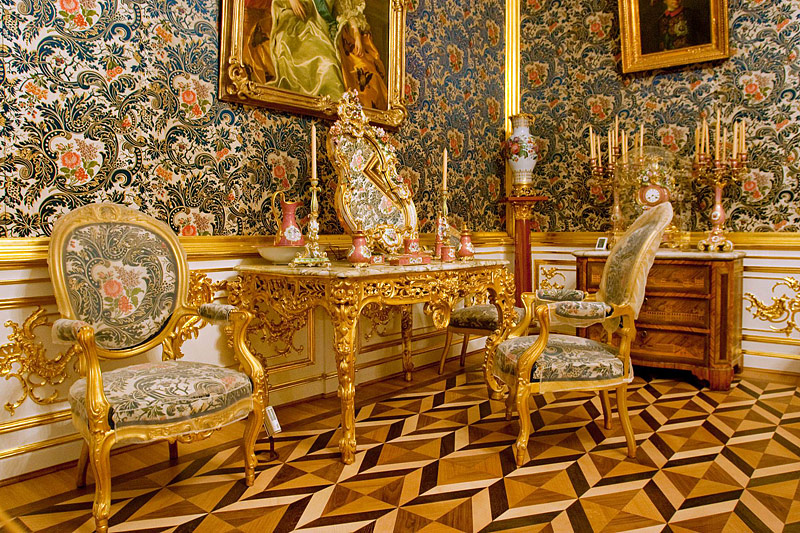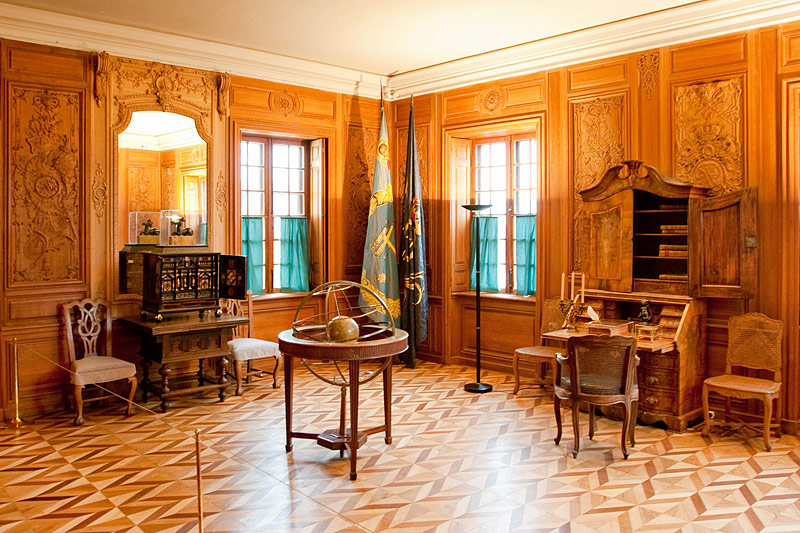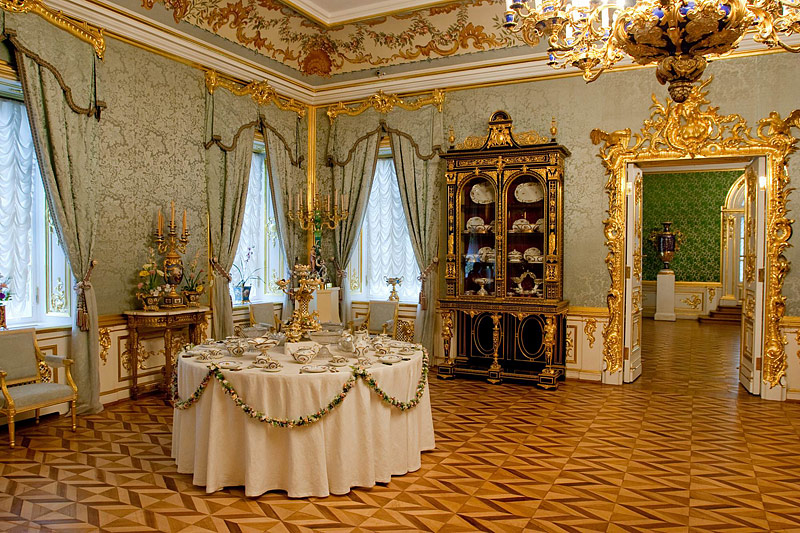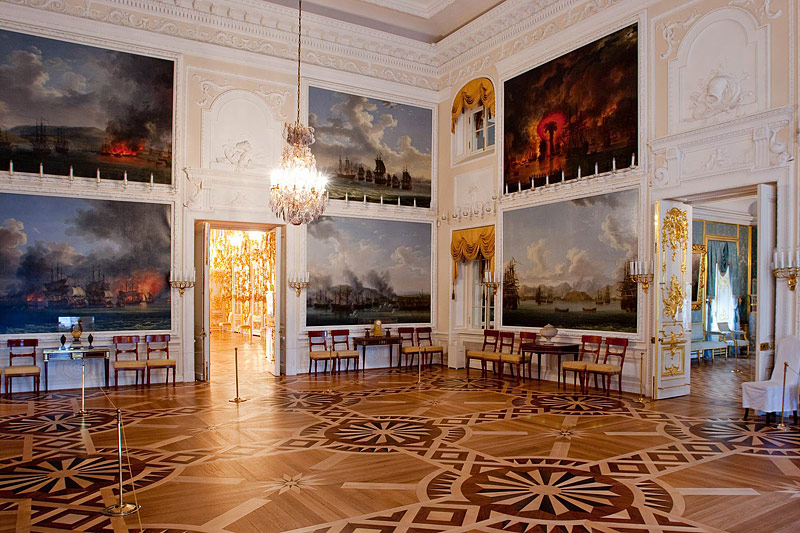Grand Palace
The Grand Palace at Peterhof was designed to be the centerpiece of Peter the Great's "Russian Versaille". Around 1720, the Tsar gave up on attempts to establish his court at Strelna, mainly because the boggy ground proved entirely unsuitable for the canals and fountains that he envisioned. Moving his attentions further west to Peterhof, the Tsar began to draw up his own plans for the grounds and palace. Work had already begun on a modest palace, designed by Jean-Baptiste Le Blond, in 1714, and that building was completed in 1721.
Meanwhile, fired by Peter's untiring enthusiasm, a massive amount of work had been completed around the palace, including the landscaping of the Lower Park, the digging of the Sea Canal, and the building of Monplaisir, Marly Palace, and most of the Hermitage. The original Higher Palace was somewhat inadequate for its surrounding splendours, and Peter instructed Le Blond and his pupil, Johann Braunstein, to expand the building.
Work was halted after Peter's death in 1725, and Petrhof was almost abandoned until Peter's daughter Elizabeth came to the throne in 1740. Elizabeth commissioned Bartolomeo Rastrelli, who had already completed the Summer Palace in St. Petersburg, to build a genuinely regal palace. Rastrelli chose to retain the original building within his design, and the result is supremely elegant and surprisingly restrained. The long, narrow palace, which was built in the last decade before baroque made way for neoclassicism, has minimal decoration, and Rastrelli's chief stylistic flourishes are the two white pavilions with gilded cupolas at the end of the wings. Beige and white, the palace is majestic without being overwhelming, and provides a perfect backdrop both to the elegantly formal Upper Garden, and to the spectacular Grand Cascade.
Inside, the Grand Palace is considerably more lavish, and the fact that the interiors had to be almost entirely reconstructed after World War Two does nothing to detract from their grandeur. The interiors are in fact a combination of original designs by Rastrelli and renovations by Yurii Felten and Vallin de la Mothe during the reign of Catherine the Great. Further changes were made in the mid-19th century, but nonetheless the palace's sumptuous interiors have retained a remarkable homogeneity of style.
Visitors entering the palace are confronted by Rastrelli's incredibly ornate Ceremonial Staircase, which sets the tone for what is to come with a magnificent fresco of Aurora and Genius and multitude of gilded statues. Highlights include the richly gilded Ballroom and Felten's splendid white-and-turquoise Throne Room, which has a particularly fine parquet floor. The Western Chinese Study is heavily Oriental, with jewel red and green walls and a beautiful Chinese tea-set. The Drawing Room of the Imperial Suite is equally influenced by chinoiserie, with particularly fine silk wall hangings. The rest of the Imperial Suite, the royal family's private quarters, is furnished in grand 19th century style. Also of interest is Peter the Great's charmingly simple Oak Study, and the adjacent Crown Room, which was in fact the Imperial bedchamber.
| Open: | Daily 10:30 am to 7 pm. Last admission is at 5:45 pm. Thursday: 10:30 am to 9 pm. Last admission is at 8 pm. |
|---|---|
| Closed: | Mondays |
| Admission: | RUB 550.00. Audio-guide: RUB 500.00 |
| Photo and video: | not allowed |
| Accessibility note: | Partial wheelchair access is available. Free wheelchair rental is available. |

